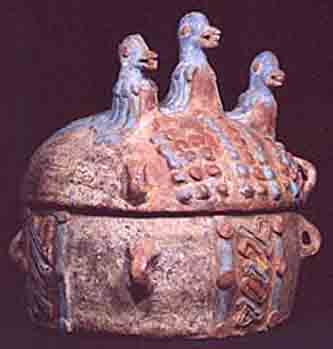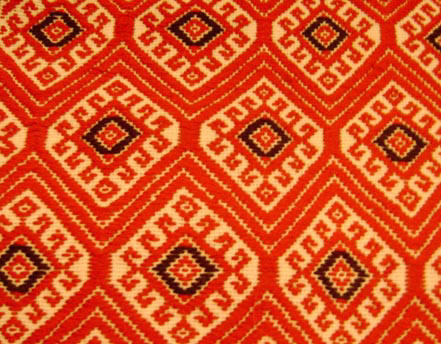 |
 |
 |
 |
 |
 |
 |
 |
 |
 |
 |
 |
 |
 |
 |
 |
 |
 |
 |
 |
 |
 |
|
|
 |
|
|
|
 |
|
|
|
Women of the Mayan Empire were of the basic model of the homemaker you would expect from early Mesoamerican societies, with some minor exceptions. The Mayan culture based part of its religion on female gods and thus they were more likely to honor and revere their women. In the early ages of the reign of the Mayas, there were even instances of women who took control of the areas they lived in and became early ruling queens. One such instant was that of Lady K’awil, who took control of her region of Tonina after two male leaders failed in their reigns and were forcibly removed to make way for Lady K’awil. The region also took on matrilineal, rule passed down through the female line, ruling as a result of the success and prosperity that she brought to her city and people. This situation and others were depicted in the art that was held within the tombs of the women, Lady K’awil herself had a painting of her in her throne and servants cowered at her feet. Most women, though, did not have nearly the experience especially as the Mayan Empire grew into a state where the men took control and limited the amount of work that women were allowed to do in their society. |
|
|
|
The majority of women were relegated to work within the home mostly to do with providing food and clothes for the family. In the case of food, women were allowed to help work the fields and bring in the harvest in a small capacity when it was necessary. They would also be in charge of cleaning the meat off of the animals that the men had killed; especially deer; and in some cases it is documented that the women were placed in charge of keeping and raising deer at their home for the men to kill. This was speculated to have resulted from the small amount of land and food resources in the area to support the deer population needed for the hunting by the men. They were not allowed to be the ones to kill the deer. Once they had the food, it was time for the women to prepare it for eating or storage. The women would clean the venison from the deer skin and prepare the agricultural goods for the meal, or to be stored for later, or even to prepare for selling to other people. With the food prepared for meals, it was the work of the women to serve the men their meal and to wait until it was their turn, when the men were done, to have their women-only meal time. |
|
|
|
 |
|
|
|
|
|
Within their religion, the women were assigned the task of preparing and maintaining the religious shrines within their homes. This was their only connection with their religion, despite the female deities. This was essential to them as they were not allowed to enter into the religious temples of their towns and thus could not practice their religion as required. It has been said that when the boys were learning how to hunt, the girls stayed at home to learn how to keep the religious shrines in their required condition for their families to worship. |
|
|
|
The women, as can be expected, were the people placed in charge of raising children in the Mayan home. The women were resigned to stay in the home and to look after the children and teach them the worldly knowledge that parents have always been in charge of teaching to their children. In the realm of children, women were also the people who acted as the midwives for women and children through the pregnancy, child birth, and child rearing processes.
Much like their counterparts in the Inca Empire, the women of the Mayan Empire were set at weaving whenever they were not doing any other work. The cloth, fabrics, and even tapestries that they produced are revered worldwide through the years for their intricate details and sturdy weaving. Even within the Mayan Empire, the women who produced the high quality woven materials were revered and respected because of their skills. The weaving projects that were produced by these women served many purposes as they were used for clothing, bedding, religious use and symbolism, and even some home decorations for the upper classes to enjoy. Weaving is a time consuming and very involved process, especially with designs and patterns of the magnitude and detail produced by Mayan women and thus it was necessary for the women to spend all of their time not spent elsewhere immersed in a loom. |
|
|
|
Another art form with practical purposes that women took on as their work was that of pottery and in the same fashion as weaving, the final product of the work put into it by the women made them pieces of artwork that are still revered worldwide and over the course of years for their style and durability. Some pottery found suggested that there was a group of individuals who would produce the pottery in their homes to be sold off to other members of the community. This suggests that there were women who had regular jobs outside of producing and providing for the family in domestic work, as they would be the ones to produce the woven materials and the pottery that could be then sold or traded to other members of their community or to people in other areas based on some amounts of trade within and outside the empire spreading their product to be discovered in other areas. |
|
|
 |
|
|
|
|
|
|
 |
|
|
 |
|
|
|
|
 |
|
|
|
|
|
|
|


